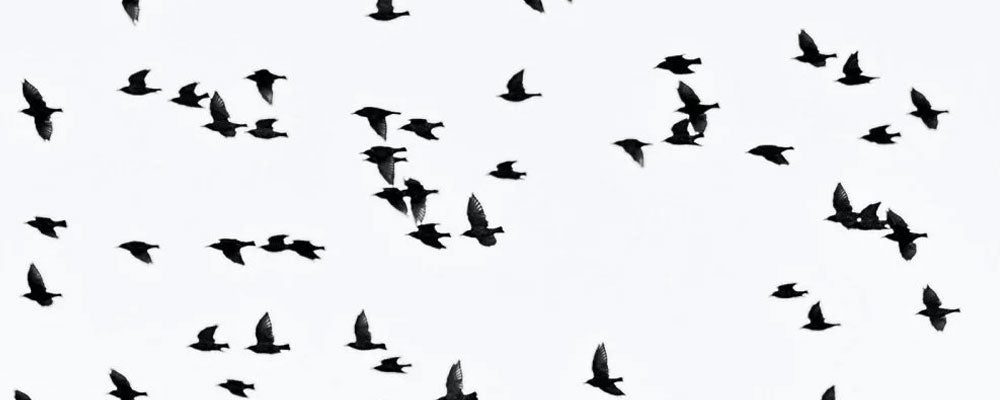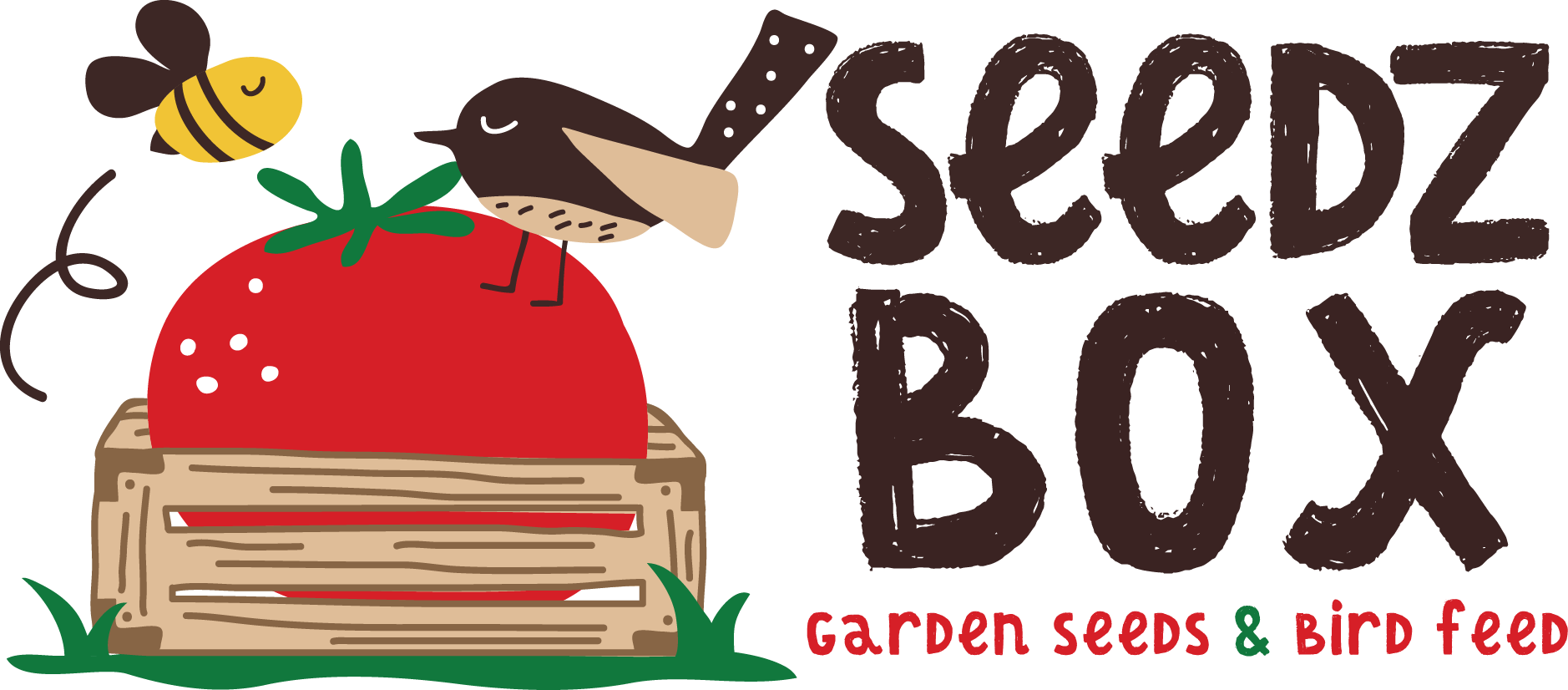
Magpies, Rooks, Ravens, Jackdaws, Starlings and Nightingales
Studies suggest that corvids, such as magpies, rooks and ravens, rank among the most intelligent of birds. Many display an instinctive desire to hoard food, such as acorns, to help sustain them through the winter. Their plumage is often mainly black, sometimes with grey and white areas. Corvids are generally noisy and quite aggressive by nature.
Gregarious birds, such as jackdaws and starlings, are often seen in groups and may be seen in British gardens at any time of year, though nightingales are seasonal visitors arriving in late spring and rarely seen, but are well known for their melodious songs.
So, here's our guide to Magpies, Rooks, Ravens, Jackdaws, Starlings and Nightingales:
Magpie Birds (pica pica)
Bold and garrulous, magpies are a common sight in gardens, and are regular visitors to bird tables. They are often blamed for the decline of songbirds because of their habit of raiding the nests of other birds to steal eggs and nestlings. They are usually seen in small groups, although pairs will nest on their own. If a predator such as a cat ventures close to the nest, there will be a considerable commotion, resulting in the nesting magpies being joined by others in the neighbourhood to harry the unfortunate feline.
Magpies sometimes take an equally direct approach when seeking food, chasing other birds, gulls in particular, to make them drop their food. These corvids are quite agile when walking, holding their long tails up as they move.
How to identify Magpies birds and what they do look like?
Black head, upper breast, back, rump and tail, with a broad white patch around the abdomen. Broad white wing stripe and dark blue areas evident below on folded wings. Depending on the light, there may be a green gloss apparent on the black plumage.
Rook Birds (corvus frugilegus)
Rooks are most likely to be seen in gardens near farmland. They nest in colonies, partly because they inhabit areas of open countryside where there are few trees. These are highly social corvids, in which a strong bond also exists between breeding pairs. The rookery serves as the group's centre, which can make them vulnerable to human persecution, but although they eat corn, they are valued for consuming invertebrates as well. The rook's bill is adapted to digging in the ground to extract invertebrates, especially cranefly larvae. Outside the breeding season, it is not uncommon for rooks to associate with jackdaws, crows or ravens as an alternative to the rookery, which may be used as a roosting site at this time.
How do you identify Rooks and what do they look like?
Entirely black plumage, with a pointed bill that has bare, pinkish skin at its base. The nostrils of adult rooks are unfeathered, distinguishing them from carrion crows. Rooks also have a flatter forehead and a peak to the crown.
Ravens Birds (corvus corax)
Famous for being residents of the Tower of London, a superstition holds that "if the Tower of London ravens are lost or fly away, the Crown will fall and Britain with it”.
Ravens are most likely to appear in gardens in upland areas. They may be recognized by their croaking calls and also their large size. They are the largest members of the crow family occurring in the Northern Hemisphere. The impression of bulk conveyed by these birds is reinforced by their shaggy throat feathers, which do not lie sleekly.
Pairs occupy relatively large territories, and even outside the breeding season they tend not to associate in large flocks. When searching for food, ravens are able to fly easily over long distances, flapping their wings slowly.
How to identify ravens and what do they look like?
Very large in size with a powerful, curved bill. Entirely black plumage. Wedge-shaped tail in flight, when the flight feathers stand out, creating a fingered appearance at the tips.
Jackdaw Birds (corvus monedula)
These covids are very adaptable birds, just as likely to be seen foraging on rubbish dumps as visiting garden bird tables. When ants swarm on warm summer days, they are sufficiently agile to catch these flying insects on the wing.
In agricultural areas, jackdaws learn to pull ticks off the backs of grazing animals such as sheep, as well as stealing their wool, which they use to line their nests. Pairs rarely nest in the open, preferring instead the relative security of an enclosed area, often utilizing buildings or even chimneys or church steeples.
The hen incubates the eggs alone, with the young hatching after about 19 days. The chicks leave the nest after a further five weeks. Relatively social birds, jackdaws often associate in large groups in winter, sometimes being seen in the company of rooks in agricultural areas.
How to identify jackdaws and what do they look like?
Glossy blackish overall, darker on the crown, around the eyes and down on to the throat. Back of the head and neck are lighter, almost silvery, depending on the race. Black bill, legs and feet. Pale bluish irides. Young birds have blackish irides and darker, less glossy feathering.
Starling Birds (sturnus vulgaris)
Small groups of starlings regularly visit bird tables, and may drive away other visitors. They are equally adept at seeking food on the ground, picking up seeds and probing for invertebrates.
These familiar garden birds are resident in a vast range of areas. However, some populations, especially in the more northerly part of their range, migrate. This prompts the sudden arrival of hundreds of birds in urban areas, especially where there are groups of trees suitable for roosting.
They often prove noisy in these surroundings, even singing after dusk if the area is well lit. In flight, large flocks are adept at avoiding pursuing predators. When breeding, a pair will often adopt the nest of a woodpecker, or use a nest box.
Nightingale Birds (luscinia megarhynchos)
Nightingales are well known for their beautiful singing, and in Europe, their arrival is seen as heralding the spring. However, these birds are often difficult to spot, since they utter their musical calls toward dusk and even after dark on moonlit nights.
Their relatively large eyes indicate that these members of the thrush family are crepuscular; becoming active around dusk. Their drab, subdued coloration enables them to blend easily into the dense shrubbery or woodland vegetation that they favour.
They are only present in Europe from April to September, when they breed, before heading back to Africa for the winter.



Leave a comment
This site is protected by reCAPTCHA and the Google Privacy Policy and Terms of Service apply.